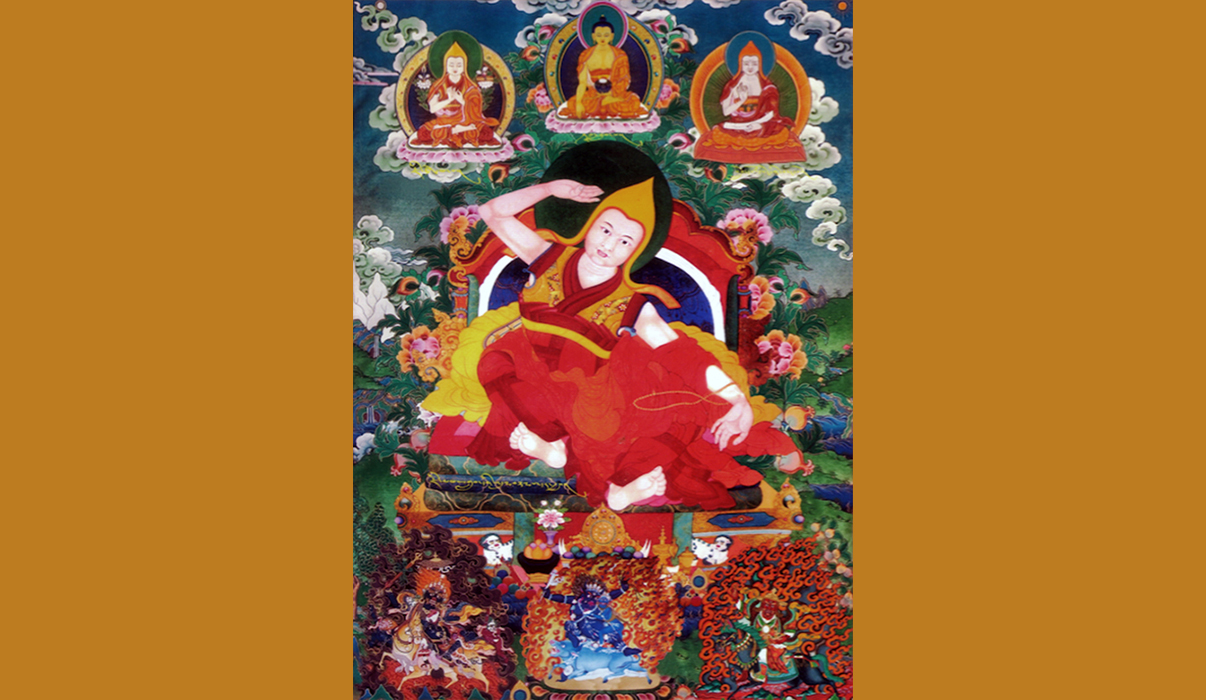Khedrup Gedun Tepa Dhargye, an incarnation of Geshe Potowa who was considered an emanation of Maitreya, was a great adept and scholar whose work on Prajnaparamita and Madhyamika are studied intensively at Sera Mey. He was a prolific writer well learned in the five treatises and was revered as a scholar who had mastered all the five sciences. Although the translations of the teachings of Buddha’s direct teachings and their Indian commentaries are considered more reliable and authentic, each monastic seats of Sera, Drepung, and Gaden emphasized more on their own authoritative texts when studying in a graduated manner, since those texts were considered like keys to unlock the more difficult Indian classics.
Khedrup Gedun Tenpa Dhargye was born in 1493 at Lungshod Odnar in Penpo with remarkable and extraordinary signs. He entered Charka monastery at a tender age and studied there for a while. Later, he joined Sera Mey Monastery and studied there intensively. Around the age of twenty, he had already started teaching at Charka Monastery, Gaden Jangtse Monastery, and Sera Mey Monastery. At sixty-two, Khedrup Tenpa Dhargye- widely known as Khedrup Tendarwa- ascended the throne of Gaden Tripa and became the supreme head of Geluk School of Tibetan Buddhism and led countless beings to the path of liberation.
While preserving the tradition of rigorous studies at Sera Mey, the old monastic authoritative texts by Gungru Gyaltsen Sangpo faced many logical challenges; a need was felt for a better replacement. At the request of many, Khedrup Tenpa Dhargye composed his commentaries of Prajnaparamita: General explanatory on all the eight chapters of Maitreya’s Abhisamaya Alanakara called The Lamp Illuminating ‘The Excellent Explanation Of The Essential Points Of The Ornament’ and ‘texts of critical analysis on all the eight chapters of Abhisamaya Alankara called The Excellent Explanation Called the Chain of White Lotuses. Those two categories of commentaries were completed in 1561. He further composed texts of both the general presentation as well as the critical analysis on the topic of the Twelve Aspects of Dependent-Link, Art of Distinguishing Between the Interpretable and Definitive, a commentary on Tsongkhapa’s Essence of Excellent Instruction- and Twenty Kinds of Sangha. At the request of many, he also composed texts of both the general presentation as well of critical analysis of ’The Perfect Illumination of the Intents’, Tsongkhapa’s commentary of Chandrakirti’s ‘Engaging in the Middle’.
Based on the texts mentioned above, as well as through the study of many other Tibetan and Indian commentaries, Sera Mey Monastic University has produced countless saints and scholars; the same tradition is preserved in exile.








